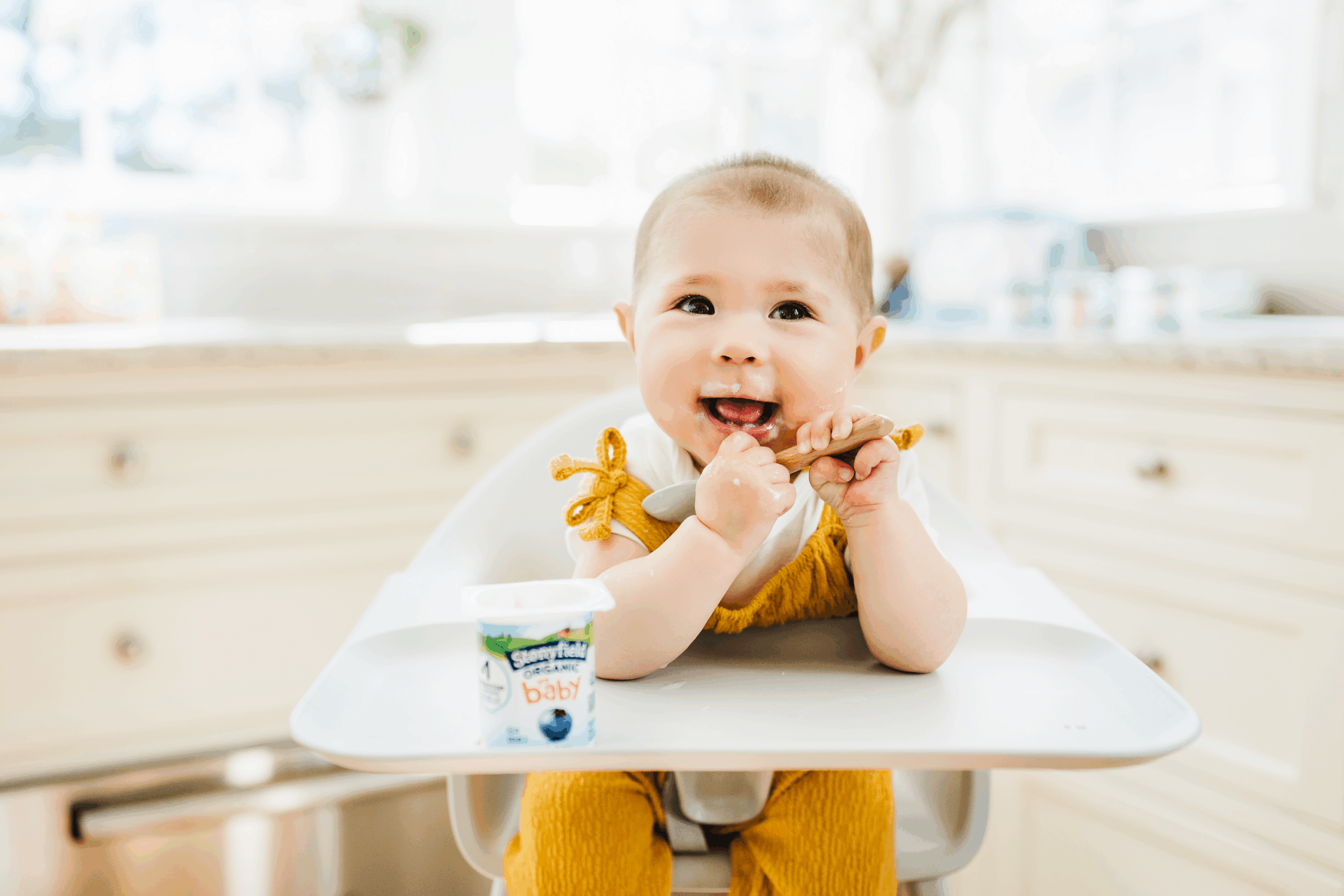First Foods: When to Start, What to Feed, and How to Make It Fun
April 11, 2013
webmaster@push10.com

The process of starting your baby on solid foods can be both exciting and a little overwhelming. Until now, “food” has only meant one thing – breast milk or formula. Suddenly there are so many decisions to make about when and what to feed your baby.
There’s no need to worry. Introducing a little one to the delicious world of food should be fun, not stressful! As long as you follow a few guidelines and offer your baby real, wholesome food, you can’t go wrong.
Below are ten tips to help make the initial stages of solid feeding easy for you and healthy for your baby.
1. Start when she is about six months old. Some pediatricians talk about introducing solids at the four-month appointment, but the American Academy of Pediatrics and public health experts agree that waiting until six months is best for your baby’s health. Research shows that introducing solids too early can be harmful, and that waiting until six months provides your baby with a large number of health benefits. (Until then, enjoy the time where each feeding doesn’t require cleaning the entire kitchen!)
2. You don’t have to start with rice cereal. Avocado, banana, plain yogurt, squash and sweet potatoes are also great choices, as are most fruits or vegetables that can be smoothly pureed. Rice cereal is a traditional first food in American culture, but not because it’s healthiest for your baby. Feel free to choose something else. In many parts of the world, babies start with a pureed version of whatever their families are having for dinner that night!
3. Go organic. Research has shown that children who eat organic food have lower levels of harmful pesticides in their bodies. Since your child is at the very beginning of his experience with eating, why not start him on the purest form of food you can find? Buying organic food also helps to ensure a safer, healthier food system for future generations.
4. Begin with one feeding per day. When you start a baby on solids, it’s best to start slow. Feed your baby about an hour after nursing, so she’s hungry but not ravenous. Also make sure it’s a time when she’s generally in a good mood. After you’re in a feeding routine at a certain time of day, you can start trying an additional feeding, and so on.
5. Make the “solid” food runny. The term “solids” can be misleading, because a baby’s first food should be more like a runny puree than anything else. Whatever food you choose for your baby’s first feedings should be very finely pureed and perhaps even mixed with a little breast milk, formula, or purified water so that it’s just slightly thicker than milk. After a baby is accustomed to eating and swallowing food from a spoon, you can slowly offer thicker purees.
6. Breast milk or formula is still the bulk of his diet. The first few months of solid feeding are for introducing your baby to new textures and flavors. Your baby won’t actually be getting many calories from food, so he’ll probably continue to nurse or bottle feed just as often as he did before. And at this point, breast milk or formula is still the most nutritious food for a baby.
7. Don’t worry if she doesn’t like something. It can take more than 15 exposures to a certain food for a baby to begin to like it, so don’t give up on something because she doesn’t seem that into it. Instead, continue to offer foods again and again in small amounts or even combined with other foods she already enjoys. Eventually, most babies will develop a taste for most foods.
8. Be flexible. Just like adults, babies will enjoy a food sometimes and not other times. Similarly, they may eat a lot at one sitting and not at another. When they’re sick, they may not feel like eating at all. So rather than sticking to a rigid schedule or wondering why your baby won’t eat something he seemed to love last week, adjust feedings to meet to your baby’s moods and needs.
9. Make feeding time a positive experience for you both. Both you and your baby should feel comfortable during feedings. If your baby doesn’t like the high chair, try holding her instead. If you’re in a rush and don’t have much time for a feeding, wait until later so you can both take your time. If your baby doesn’t seem to like mealtime, wait a week or two then try solids again. A main goal of solid introduction is to help a baby experience food in a positive manner, so she is motivated to try and enjoy a wide variety of healthy foods throughout her life.
10. Serve your baby something you would eat. If you’re turned off by the smell of a jar of baby food, odds are your baby will be too. The best way to get your baby to like eating is to make or buy foods that smell and taste good to you. Baby food will taste less sweet and less salty than foods adults usually eat, but beyond that it should look and taste appealing to someone of any age.
Looking for more reliable information on solid feeding? KellyMom.com offers researched-based advice and debunks the most common myths about solids.
Disclaimer: The views and opinions expressed in this post are solely those of the author and do not necessarily reflect the opinions and views of Stonyfield. The content provided, and in any linked materials, are not intended and should not be construed as medical advice. If you have any questions about health or nutrition, we always think it’s best to consult with your doctor or healthcare practitioner.
